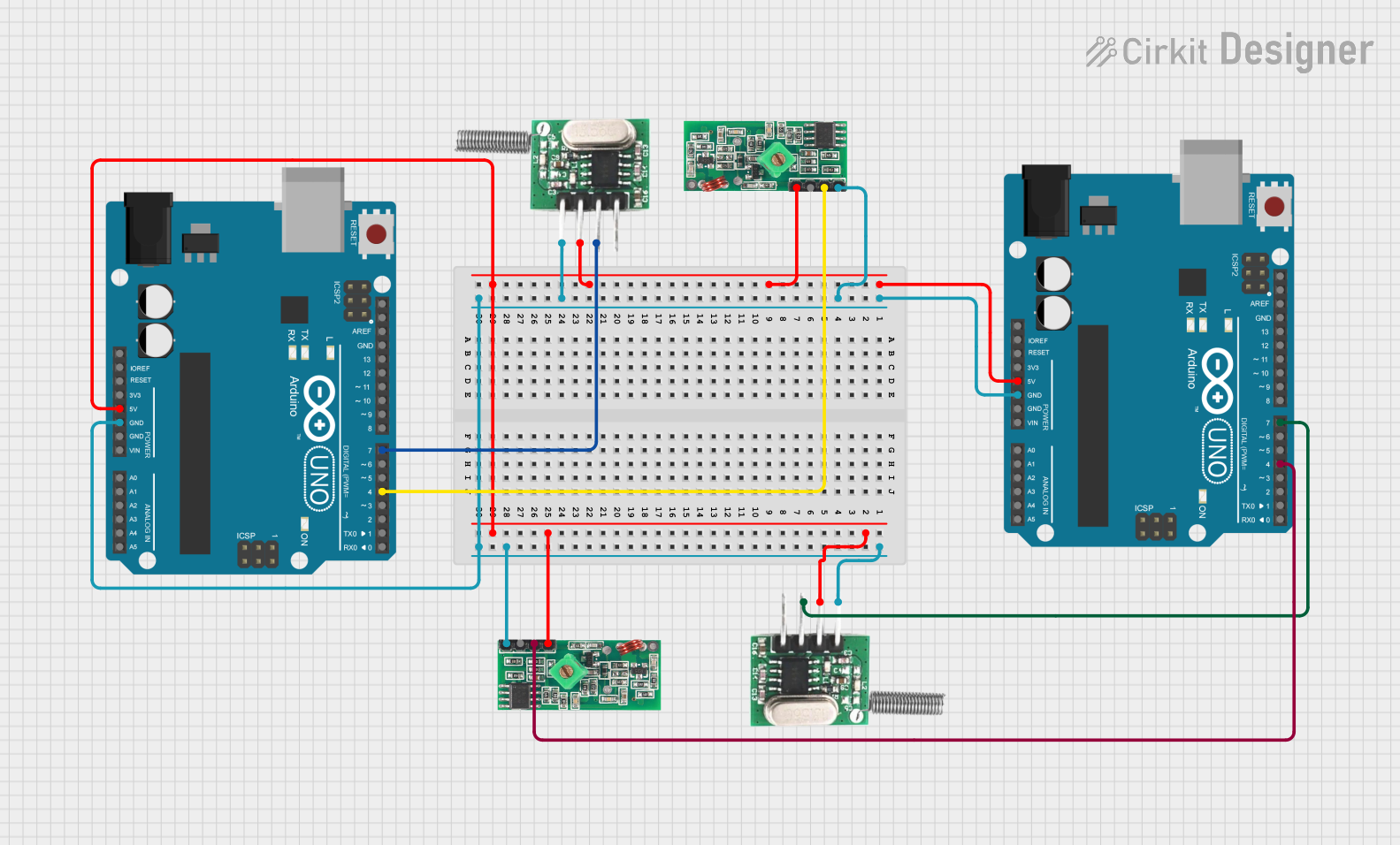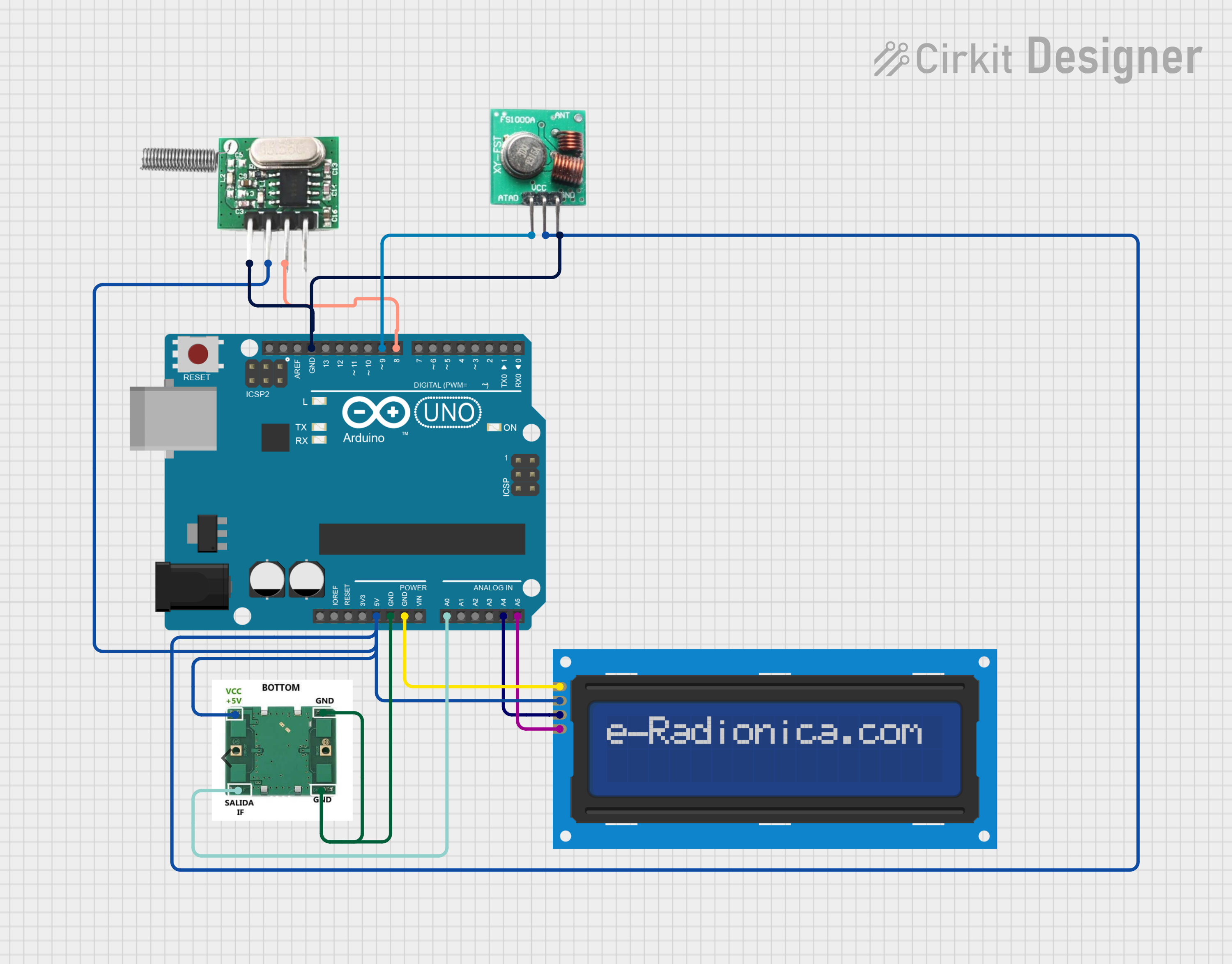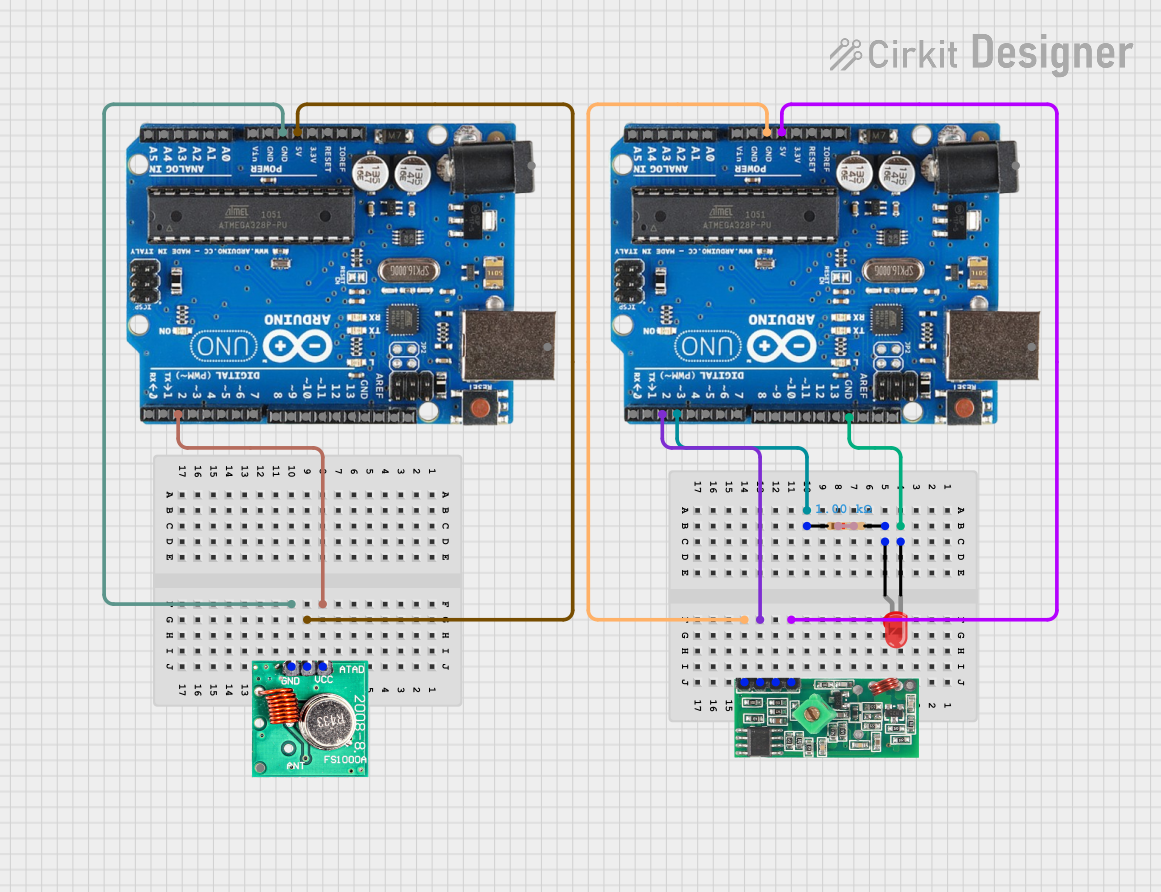
How to Use 433Mhz Ontvanger: Examples, Pinouts, and Specs

 Design with 433Mhz Ontvanger in Cirkit Designer
Design with 433Mhz Ontvanger in Cirkit DesignerIntroduction
The 433MHz RF Receiver Module is an electronic component designed to receive radio frequency (RF) signals at the 433MHz frequency band. This frequency band is widely used for low-power, short-range communication in various devices such as remote controls, garage door openers, wireless sensor networks, and home automation systems. The module is popular due to its ease of use, low cost, and ability to interface with microcontrollers like the Arduino UNO.
Explore Projects Built with 433Mhz Ontvanger

 Open Project in Cirkit Designer
Open Project in Cirkit Designer
 Open Project in Cirkit Designer
Open Project in Cirkit Designer
 Open Project in Cirkit Designer
Open Project in Cirkit Designer
 Open Project in Cirkit Designer
Open Project in Cirkit DesignerExplore Projects Built with 433Mhz Ontvanger

 Open Project in Cirkit Designer
Open Project in Cirkit Designer
 Open Project in Cirkit Designer
Open Project in Cirkit Designer
 Open Project in Cirkit Designer
Open Project in Cirkit Designer
 Open Project in Cirkit Designer
Open Project in Cirkit DesignerTechnical Specifications
Key Technical Details
- Operating Frequency: 433MHz
- Supply Voltage: 3.3V to 5V DC
- Current Consumption: 5mA (typical at 5V)
- Sensitivity: -105dBm (typical)
- Modulation: OOK (On-Off Keying)
- Operating Temperature: -10°C to +70°C
Pin Configuration and Descriptions
| Pin Number | Pin Name | Description |
|---|---|---|
| 1 | VCC | Power supply (3.3V to 5V DC) |
| 2 | DATA | Data output (digital high/low signal) |
| 3 | GND | Ground |
| 4 | ANT | Antenna connection (for RF signal input) |
Usage Instructions
Interfacing with a Circuit
- Power Supply: Connect the VCC pin to a 3.3V or 5V power supply from your microcontroller or breadboard power rail.
- Data Output: Connect the DATA pin to a digital input pin on your microcontroller.
- Ground: Connect the GND pin to the ground on your microcontroller or breadboard.
- Antenna: Attach a 17cm wire to the ANT pin to serve as an antenna for better signal reception.
Important Considerations and Best Practices
- Antenna Length: For optimal performance, the length of the antenna should be approximately one-quarter of the wavelength of the frequency. For 433MHz, this is around 17cm.
- Placement: Keep the receiver away from metal objects and noise sources such as motors and high-power electronics.
- Power Supply: Ensure a stable power supply to avoid data errors.
- Data Decoding: Use a library or write code to decode the signal received by the DATA pin.
Example Arduino Code
#include <RCSwitch.h>
RCSwitch mySwitch = RCSwitch();
void setup() {
Serial.begin(9600);
mySwitch.enableReceive(0); // Receiver on interrupt 0 => that is pin #2
}
void loop() {
if (mySwitch.available()) {
int value = mySwitch.getReceivedValue();
if (value == 0) {
Serial.println("Unknown encoding");
} else {
Serial.print("Received ");
Serial.println( mySwitch.getReceivedValue() );
}
mySwitch.resetAvailable();
}
}
Troubleshooting and FAQs
Common Issues
- No Data Received: Ensure the antenna is properly connected and the module is powered correctly.
- Intermittent Data: Check for sources of interference and ensure the antenna is the correct length.
- Garbled Data: Verify that the data decoding method matches the transmitter's encoding.
Solutions and Tips
- Antenna Issues: If reception is poor, try repositioning the antenna or moving the receiver away from obstructions.
- Power Issues: Use a regulated power supply to prevent voltage fluctuations that could affect the receiver.
- Decoding: Use libraries like RCSwitch for Arduino to simplify the decoding process.
FAQs
Q: Can I use this module outdoors? A: Yes, but it should be enclosed in a weatherproof case to protect it from the elements.
Q: How far can the receiver pick up signals? A: The range depends on many factors, including antenna design, transmitter power, and environmental conditions. Typically, it can range from a few meters to over 100 meters in open space.
Q: Can the receiver work with any 433MHz transmitter? A: Generally, yes, as long as the transmitter uses a compatible modulation scheme (OOK) and the signal is within the receiver's sensitivity range.
Remember to always adhere to local regulations regarding the use of RF devices and ensure that your application does not interfere with other critical communications.